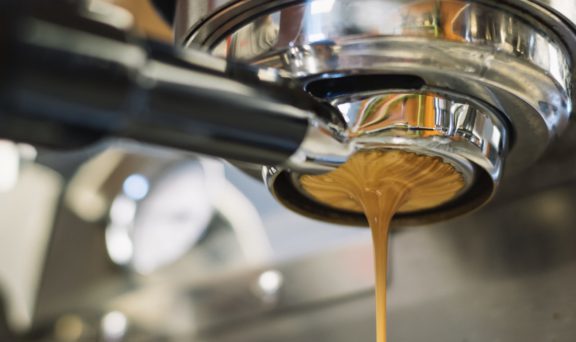How To Make Espresso Without An Espresso Machine
Table Of Contents
About This Guide
If you are a coffee lover, you almost certainly enjoy espresso. No matter what your daily brew of choice may be, nearly all of us indulge in a rich, dark, and potent espresso from time to time. And nearly all of us rely on our local barista to deliver this indulgence.
Even if we wanted to make espresso at home, the cost of a decent espresso machine is prohibitive for most of us (most of the cheaper machines just do not work as advertised). And there does seem to be a mix of science and art to getting an espresso to come out correctly with that beautiful head of crema and super-rich flavor.

The machines we see in professional cafes are absurdly expensive. They can start at $6000 and run up over $10,000. And that is just the machine. These things require professional installation and professional maintenance. They are just beyond the average person. Hell, they are beyond the average rich person.
As I said, most of the home espresso makers leave a little to be desired, considering the expense, and they do not seem to last very long.
However, there are methods for brewing espresso at home that won’t have you re-designing your kitchen to accommodate a $6000 machine.
To make a true espresso we need to force hot water through the coffee at some pretty high pressure. Nine times the atmospheric pressure (or nine bars) is about what it takes to make espresso in the traditional machine. There is no way we can reproduce that without mechanical assistance.
What Exactly Is Espresso?
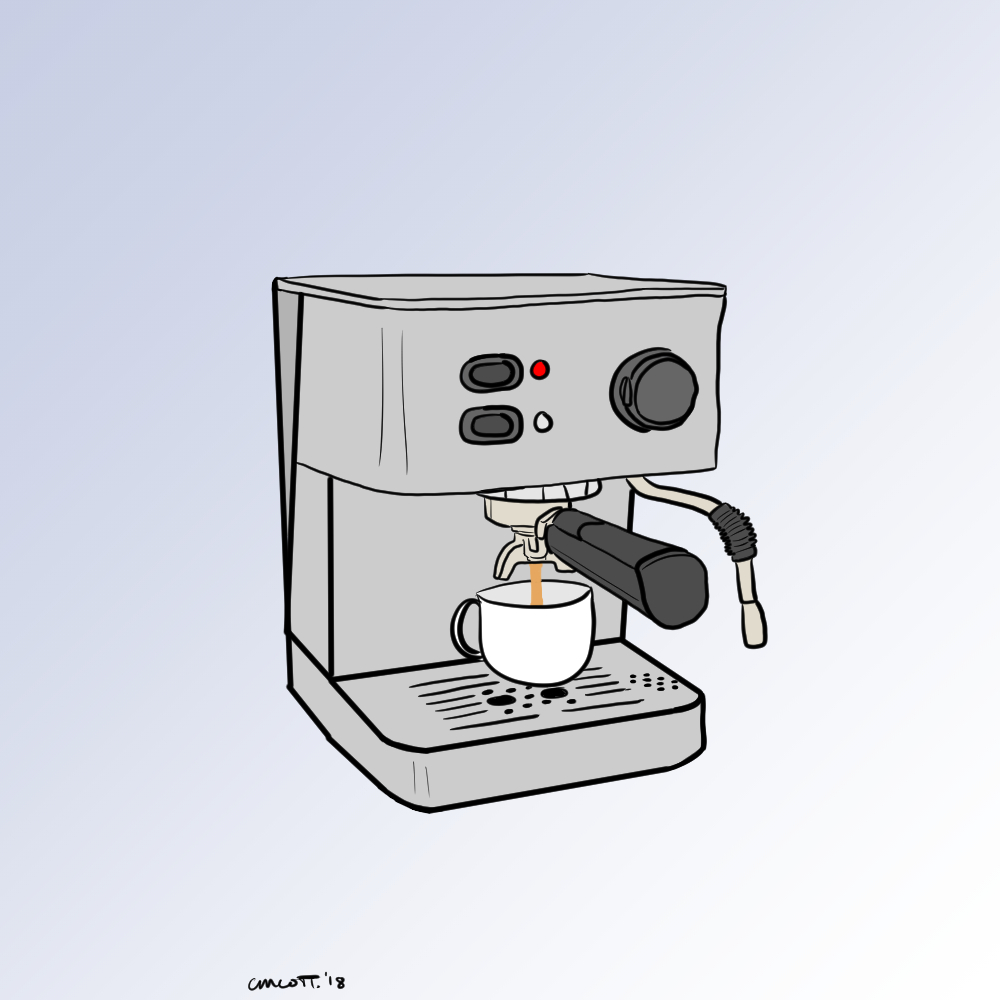
Like I said, there is some science underlying espresso. The balance of temperature and pressure is complex which is why professional espresso machines are so expensive. In turning to alternative methods for making espresso, we need to get to the basic features of what makes up a cup of espresso.
You can make this as complicated as you want. But the simple truth is that espresso consists primarily of a dark roast and a fine grind. These two ingredients with hot water under pressure are what constitutes espresso.
The espresso roast is one of several dark roasts which include French and Italian roasts. Any of these can be used to make espresso, although there are purists who will object to that claim.
(I have found a number of sources which explain that espresso is a drink and not a roast. You can take that for what it is worth).
If you want to stay strictly to the letter of espresso, then buy an espresso roast. The beans are roasted to about 465-485 degrees F until the bean becomes nearly black. The dark roasts make for a bitter and smoky flavor. This type of roast leaves more of the oils on the surface of the beans.
These dark roasted beans are then ground extremely fine. The grind resembles something between powdered sugar and fine beach sand. This fine grind makes it possible for the pressurized water to pull all of those flavorful oils from the coffee. The pressure of the espresso machine extracts the flavor from these oils without leaving the oily residue in your final brew. This is what makes for the freshness of espresso and that rich crema on the top.
How do you get around the pressure and the machine that delivers it? There are a few methods you can try and that is what we are getting to now.
The AeroPress Method
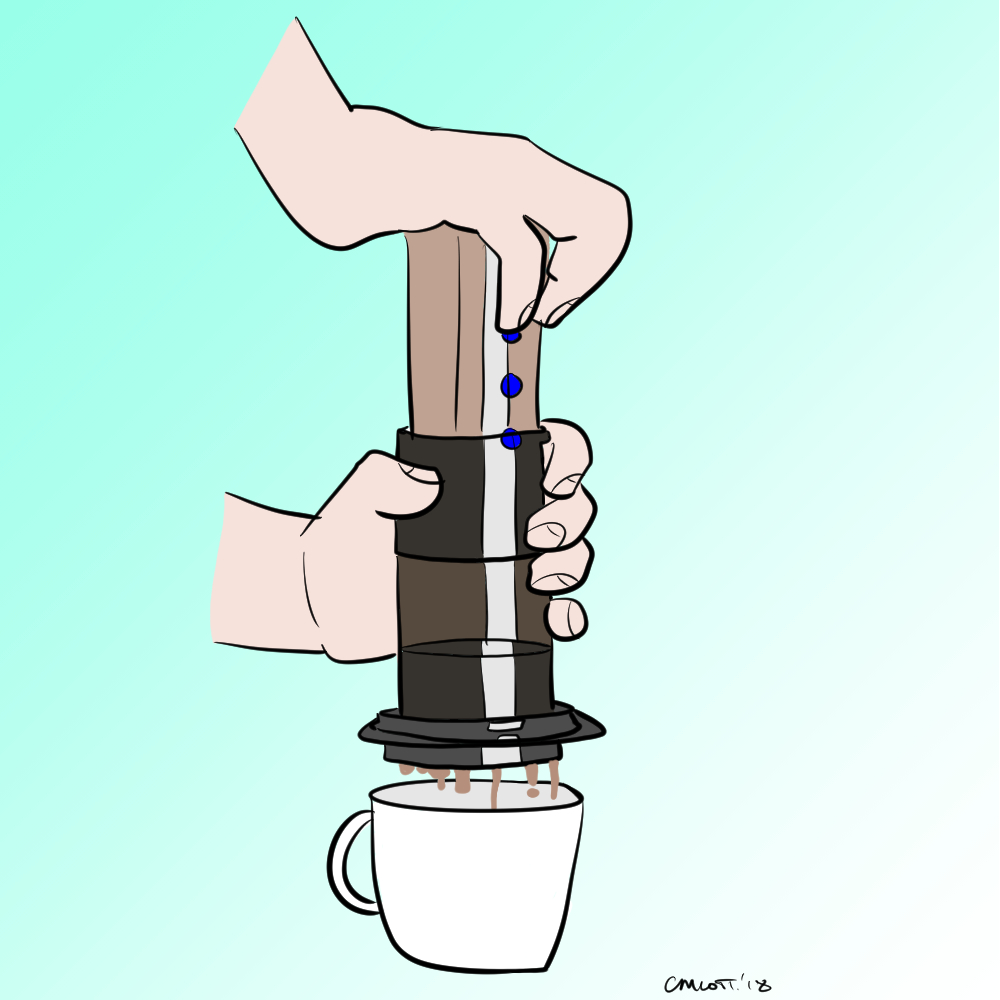
The invention of the AeroPress was a stroke of genius. This simple piece of equipment makes it possible to make a double shot of espresso that is really close to what comes from a machine.
In addition to the obvious things like a stovetop kettle and some measuring spoons, you will need a good sturdy cup because the AeroPress goes directly on the cup. You will be pressing down firmly to make your espresso so you will need something that will not break as you apply pressure.
First you will need to prime the AeroPress by putting a filter in the drain cap and running some hot water through it.
Heat your water in a stovetop kettle. The optimum temperature for brewing coffee is 205 degrees F. With the AeroPress espresso you can take some liberties and work between 185 and 205. It is really a matter of what tastes best to you.
For a double shot of espresso you will need two tablespoons of ground espresso roast (one ounce, or approximately 28 grams if you are weighing this out with a coffee scale).
Transfer the ground coffee to your AeroPress and gently tamp down the grounds. You can get a special tool for this but any flat-bottomed object will do.
Measure out four ounces of hot water and quickly pour this into the AeroPress. Swirl it around and let it sit and steep for about 30 seconds.
Then push down on the plunger, applying firm and even pressure. You will feel resistance but keep pushing down until it reaches the end.
A little warning: If you meet difficult resistance when pushing down the plunger, ease up. That pressure has to give somewhere and it will likely blast all over you. Sometimes the grind is tamped down a little too tight. Experiment with this and you will easily avoid this problem.
Transfer your espresso to a cup and you are ready to enjoy.
The Moka Pot Method
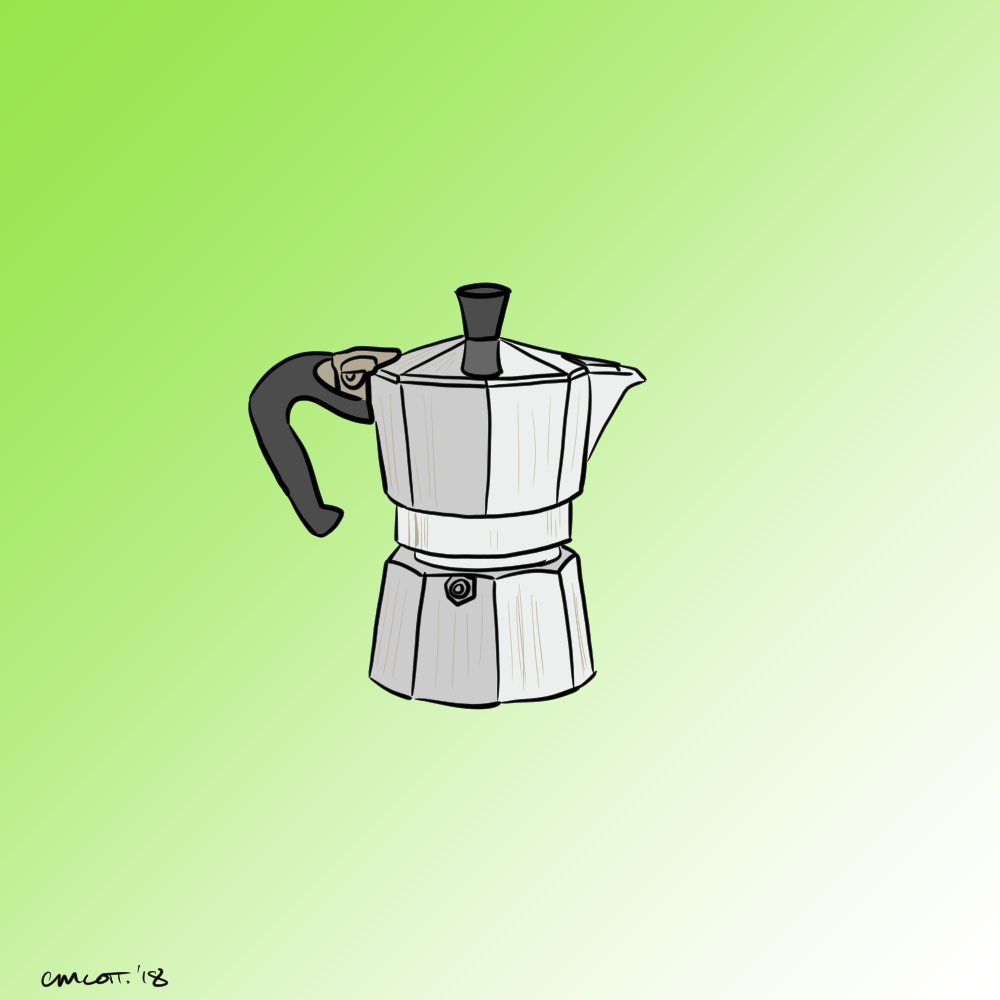
Invented by an Italian, Luigi di Ponti, in the grand tradition of espresso, the Bialetti pot was patented in 1933 and has been something of the standard ever since. There are a variety of other manufacturers now, so you should be able to get one of these fairly easily.
The brilliance of the Moka pot is that it can come close to a real espresso machine. The Moka pot allows you to create steam and pressure on the stove top and thereby recreate the most significant feature of a real espresso machine.
The Moka pot works by drawing water up through a funnel filter where it infuses with the ground coffee before it passes into the top section.
There are only three parts to the Moka pot: a water reservoir, funnel filter, and coffee pot at the top. It is simplicity at its finest.
For my money, the Moka pot is the best method around. However, it does require some experimenting to get it just the way you like it. It is also a little more time consuming than the AeroPress.
Again, grind enough coffee (about four teaspoons) as fine as you can so that it looks almost the same as powdered sugar.
Most Moka pots have a line in the reservoir to indicate where to fill it. If not, check your manufacturer’s instruction so you do not overfill.
Place your ground coffee onto the metal filter and tamp this down paying attention not to make it too tight. You do not want to clog the flow of steam and hot water.
Assemble the pot following the instructions with the pot. These things are all about the same. You screw the filter and pot onto the water reservoir and make sure everything is properly sealed.
Put it on the stove top and turn to medium high heat. You do not want to heat up the pot too quickly or intensely or it will spray out onto the stove (and potentially on you!).
Just before the coffee begins to bubble and percolate, remove it from the heat and let it finish.
A side note: You can do this over a campfire. The Moka pot is an ideal camping coffee accessory. You just need to be careful about where you place the pot. Obviously, you do not want it directly in the hottest part of the fire. Place it on the outer coals to make sure the brewing time can be controlled.
Pour you perfect espresso into a cup and enjoy!
The French Press Method
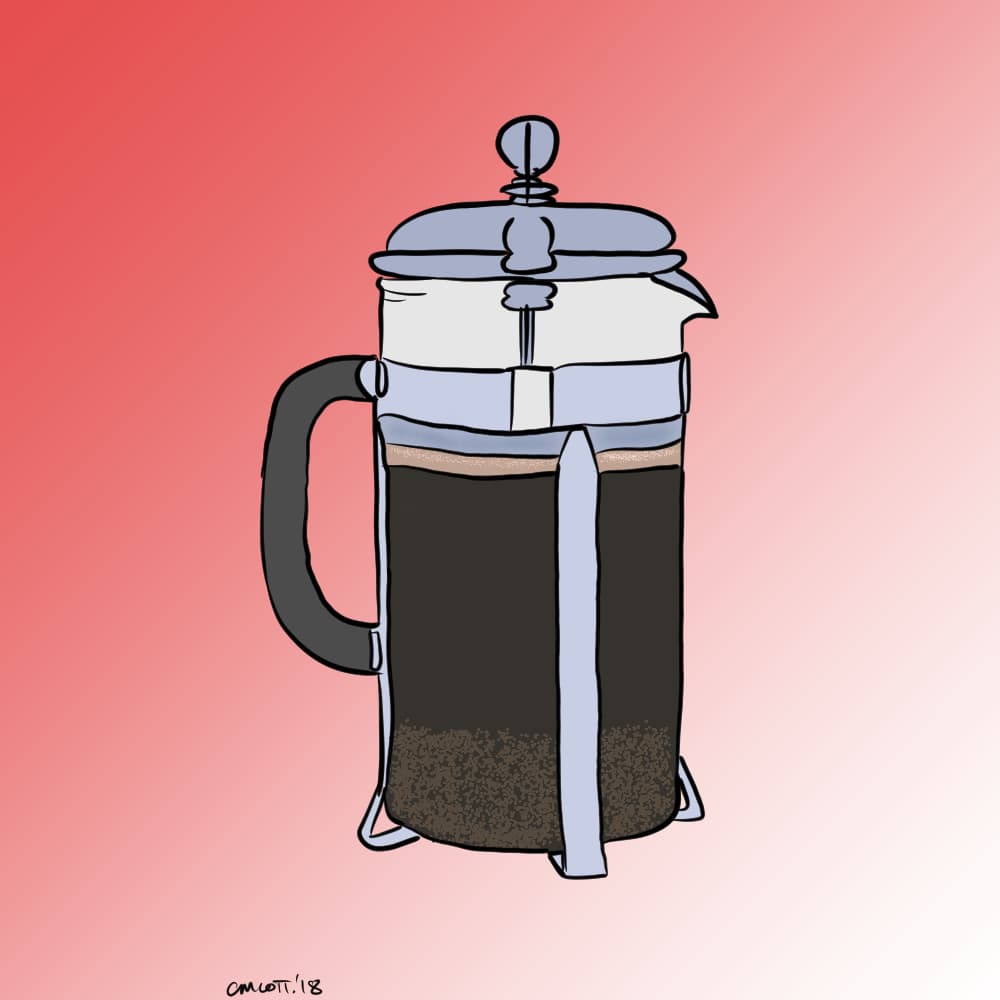
A French press is probably the least effective substitute for making espresso without an espresso machine. It can get you close, but it will not be quite as intense and satisfying as the previous two methods.
However, I have found that I can work with water temperature and the size of my grind to make this method work pretty well.
Once again, grind the coffee the consistency of powdered sugar. You will need approximately two tablespoons.
Place the ground coffee in the French press. This time you can leave it loose. Brewing in a French press requires the ground coffee to remain open to allow the water to infuse the grounds.
Heat your water in a stovetop kettle to 205 degrees F.
Once the water is at temperature (just under boiling), pour a small amount of hot water onto the grounds and allow this to settle for a few seconds. This allows the coffee to bloom, releasing the oils and aromatics.
Then pour the hot water onto the ground coffee. There is generally a fill line on French presses. Do not stir your coffee. This brewing process depends on the suspension of coffee in the water which allows for a full extraction of the oils and flavors.
After four minutes, depress the plunger on the French press with a slow steady movement. Plunge about half way then pull the plunger back up. Then gently push all the way down to the grounds.
Ideally you would transfer the coffee to a serving pot so as to stop the brewing process. This way you will keep the best part of the brew and not spoil the entire pot with the bitter acidity that can continue to be extracted from the grounds.
Pour and enjoy.
Get Your Espresso On Today
The simple fact about brewing coffee by any method is that the results in your cup depend on the beans that you start with. There are no expensive machines or brewing techniques that can compensate for mediocre or bad coffee beans.
Make sure you begin with a top quality espresso roast. The advantage of the internet age is that the entire world is a few clicks away and absolutely superb coffees are available to us.
The grind is essential for making espresso. You need the finest grind you can get. If you use your home grinder (manual or electronic), get the beans to something like powdered sugar or fine sand. This is much finer than what you would use for a pour-over or and automatic drip.
And finally, pay attention to water temperature. As stated above, 205 degrees F is the ideal temperature of water for brewing coffee. This is just under boiling.
While it is impossible to completely recreate the perfect espresso we get from the complex machines found in modern cafes, it is possible to make some good alternatives at home. All of the methods above will give you a good strong cup of coffee that carries the powerful flavors of espresso. They vary in terms of how rich and creamy the brew will be in the end. By experimenting with these you will be able to create a really close version of professionally brewed espresso.
The real fun of these methods is playing around with them in order to perfect them. The pay-off is making fantastic espresso at home whenever you want it!

